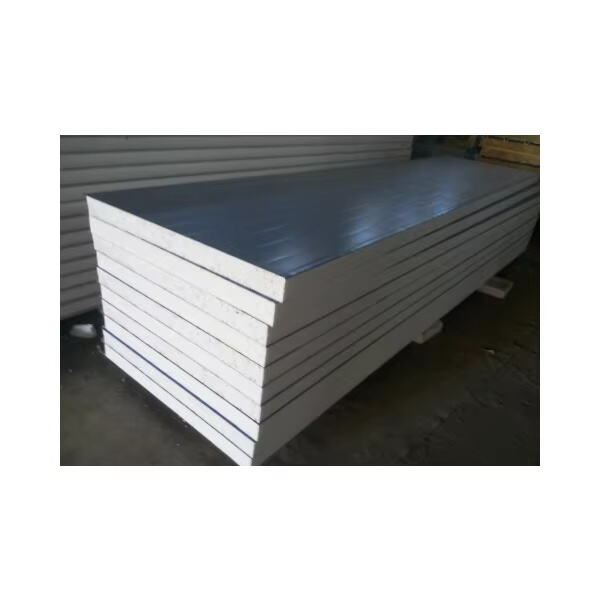Når ein vel eit takvalg, er det avgjørende å forstå kostnadene for isolerte takpaneler i forhold til tradisjonelle materiale. Du ser ikkje berre på priset i dag. Tenk på energibesparingar, varighet, og vedlikehald på vei. Ein kløft val no kan spara deg pengar og hovudpine i framtida. Kva er prioritera?
Forskostim
kostnader for isolerte takplater
Når du først ser på isolerte takpaneler, kan prisen synast høgare enn andre alternativ. Desse panelane kombinerer isolering og takmateriale til eit produkt. Det tyder at du betaler for begge i ein enkelt kjøp. Avhengig av storleiken og typen kan kostnaden for isolerte takpaneler variera frå kr4 til kr10 per kvadratmeter. Premium-alternativ med avanserte funksjonar kan kosta meir enn så. Men denne investisjonen er ofte forbetalt for å økja energiinntakset, som kan spara pengar seinare.
Kostnadar for tradisjonelle takmateriale
Tradisjonelle takmateriale, som asfaltbjelke eller metallplater, kostar vanlegvis mindre på forhånd. Asfaltskjerte, til dømes, er mellom ein til fire dollar per kvadratmeter. Metaldak kan kosta mellom 3 og 7 dollar per kvadratmeter. Desse materiala inngå ikkje isolering, så du må legg til budsjett for det særleg. Det kan vera at den første prisen er mindre, men du kan ende opp med å betale meir når du teljer inn ekstra kostnadene for isolering.
Sammenlikning av installasjonskostnad
Installasjonskostnadene varierer avhengig av materialet og kompleksiteten til prosjektet. Isolerte takpaneler er ofte raskare å installera fordi dei kombinerer tak og isolering. Dette kan redusere arbeidskostnadene. På den andre sida krev tradisjonelle takmateriale særskild installasjon for tak og isolering. Det vil seie at det tar fleire timar og kor mykje meir arbeidskraft. Viss du ønskjer å spara på installasjon, kan isolerte takpaneler vera det beste valet.
Langsiktige besparelser
Fordeler med energieffektivitet
Har du nokon gong tenkt på kor mykje energi taket ditt kan spara? Isolerte takpaneler er utformte for å halda huset ditt komfortabelt året rundt. Dei minkar varmeforlustane om vinteren og blokkerer varmen om sommaren. Dette tyder at HVAC-systemet ditt ikkje treng å arbeide så hardt, og at du får mindre energi. Over tid kan du sjå at sparane aukar. Tradisjonelle takmateriale tilbyr derimot ikkje innstilt isolasjon. Du må ha ein særskild isolasjon, som kanskje ikkje fungerer like effektivt som den integrerte utforminga av isolerte paneler.
Haldbarheit og levetid
Når det gjeld holdbarheit, er isolerte takpaneler ofte lenger i stand enn tradisjonelle materiale. Desse panelane er bygd til å tåle alle slags uvær, frå kraftig regn til ekstrem varme. Mange av dei har ein garanti på 20 til 40 år. Tradisjonelle takmateriale, som asfalt, held berre 15 til 30 år. Du må vel erstatta dei før, og det vil ha langsiktige kostnader. Ein slitstærkt tak tyder færre reparasjonar og utskiftingar, og sparar deg for pengar og plikt.
Kostnadar for vedlikehald over tid
Ingen vil gjere helgene sine til å laga taket deira, sant? Isolerte takpaneler krev minimal vedlikehald. Dei er solidare og kan ikkje bli skadd av skadedyr, fuktighet og vær. Tradisjonelle tak, særleg dei som er laga av helved, treng ofte meir vedlikehald. Du kan få på deg sprekne bjelker, lekkasje eller til og med mugg. Med tida kan desse små repairane bli ein stor kostnad. Ved å velja isolerte takpaneler kan du spara både tid og pengar på vedlikehald.
Miljøpåvirkning
Haldbarleik av isolerte takpaneler
Har du nokon gong tenkt på korleis eit tak påverkar verda? Isolerte takpaneler er ofte utformte med bærekraft i hug. Mange produsentar bruker miljøvennlege materialer som resirkulert stål eller aluminium for å lage desse panelane. Dessutan minkar energiforbruket i huset ditt og karbondioksidutslippet ditt. Nokre av panelene oppfyller til og med grøne byggesertifiseringar, og er dermed eit godt alternativ om du vil ha eit hus som er miljøbevisst.
Avfall og resirkulering av tradisjonelle materiale
Tradisjonelle takmateriale, som asfaltverk, kan skape eit stort avfall. Veit du at millionar av tonn tonn av jordsmelting går vekk kvar år? Asfaltbjelk er vanskeleg å resirkulera på grunn av petroleumsbaserte materiale som vert brukt i produksjonen. Metaldak er betre fordi det ofte kan resirkulerast, men det er framleis avhengig av lokale resirkuleringsanlegg. Om det er viktig for deg å redusera avfall, kan isolerte takpaneler vera det beste valet sidan dei kombinerer tak og isolering til eitt produkt, og reduserer avfall.
Energiforbruk under produksjon
Energien som vert brukt til å produsera takmateriale kan variera mykje. Isolerte takpaneler krev vanlegvis meir energi i forkant fordi dei kombinerer fleire lag til eitt produkt. Men langtidssparingane av energi ofte oppveiger denne første effekten. Tradisjonelle materiale som asfaltbjelke brukar mindre energi under produksjonen, men gir ikkje den same energieffektiviteten når dei er montert. Viss du tenkjer på det store bildet, kan isolerte paneler vinna når det gjeld den totale energimåten.
Veljar du mellom isolerte takpaneler og tradisjonelle takmateriale avhenger av kva du prioriterer. Isolerte paneler gjev langsiktige besparingar og energieffektivitet, medan tradisjonelle materialer kostar mindre i forkant. Tenk på budsjettet ditt, kor lenge du vil bu i huset ditt, og miljømålene dine.

 EN
EN







































